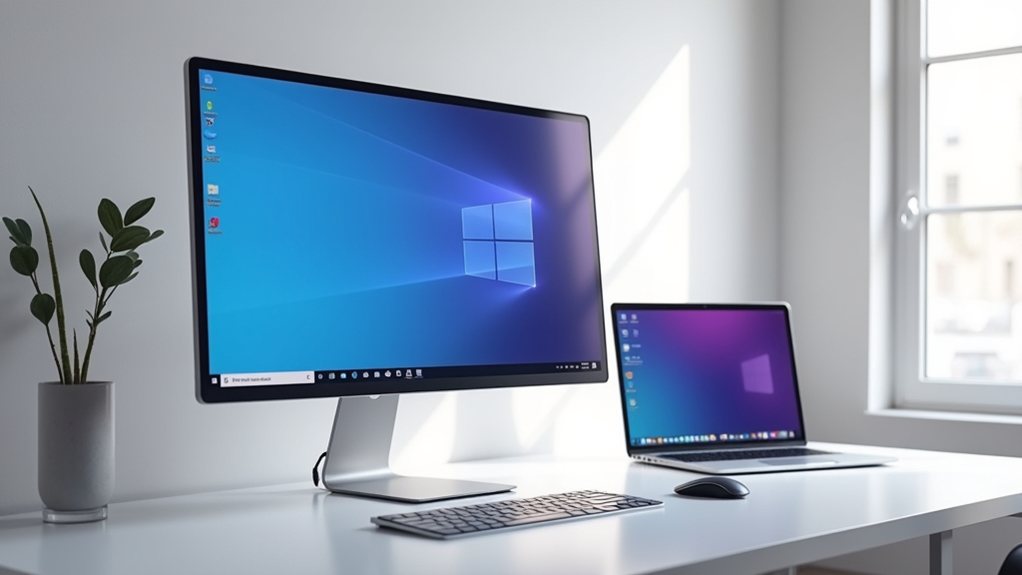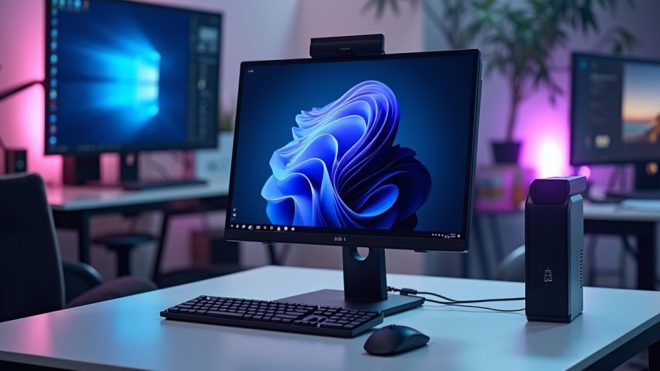Windows 11 has achieved a remarkable milestone, capturing over 50% of global Windows PC market share by mid-2025. The operating system surpassed Windows 10 for the first time in June, peaking at 53% adoption in spite of initial slow uptake since its 2021 launch. Enterprise adoption and the impending end of Windows 10 support drove this shift, though some markets still show resistance. The transformation of desktop computing continues to unfold as Microsoft’s latest OS gains momentum.

After years of gradual adoption, Windows 11 has finally crossed a major milestone, capturing more than half of the global Windows PC market share by mid-2025. The operating system reached 49.02% of desktop Windows PCs by August 2025, marking a dramatic change from its initial slow adoption rate when it launched in late 2021. Earlier in the year, Windows 11 achieved an even higher peak of 53% market share in June, definitively surpassing Windows 10 for the first time.
This surge in adoption hasn’t been without its fluctuations. In spite of the overall upward trend, Windows 11’s growth showed signs of stalling around mid-2025, with minor dips from 43.72% to 43.22% in early June. Nevertheless, the impending end of Windows 10 support acted as a catalyst, driving a sharp increase in installations from 41.6% in 2024 to 54.3% in early 2025. Expert analyst Kieren Jessop from Canalys has noted that the adoption is progressing as anticipated despite temporary slowdowns.
Geographic patterns reveal interesting adoption variations across regions. The United States leads the charge, with Windows 11 commanding the majority of Windows desktop installations. Meanwhile, some countries still show a preference for Windows 10, though even holdout markets are gradually adapting. The integration of Microsoft Teams into the taskbar has particularly appealed to business users seeking seamless communication tools.
Global Windows 11 adoption shows regional diversity, with the US market leading while other nations maintain Windows 10 loyalty.
Enterprise and commercial shipments have played a vital role, with forecasts showing an 8.1% increase in Windows-only new devices in the US and 6.4% globally in 2025. Corporate adoption has been more measured, with many businesses taking a cautious approach because of application compatibility concerns. The stringent hardware requirements for Windows 11, including TPM and specific CPU compatibility, initially created barriers for some users.
Still, Microsoft’s strategic use of upgrade prompts and the looming Windows 10 end-of-life announcement have effectively pushed many users toward the newer operating system. As Windows 11 claims the throne as the most popular Windows version, Windows 10 maintains a substantial presence with 45-53% market share. More surprisingly, Windows 7 still clings to approximately 3.5% of desktop Windows usage, even after having reached end-of-support years ago.
The combined share of older versions like Windows 8, 8.1, and XP has dwindled to below 2%, marking the end of an era. This change represents the most significant version upgrade surge since Windows 10’s launch, though it hasn’t been without its challenges. Hardware refresh cycles and corporate policies continue to influence adoption rates, as familiarity with Windows 10 keeps some users hesitant to make the switch.
As Microsoft pushes forward with Windows 11, the environment of desktop computing continues its evolution, marking a new chapter in the Windows story.
Final Thoughts
Windows 11’s impressive rise to nearly 50% market share signifies a crucial advancement in Microsoft’s operating system journey. Despite initial user concerns about hardware requirements and new features, steady adoption has been witnessed through ongoing feature updates and new device sales. As Windows 10 support is set to conclude in 2025, this trend indicates that Microsoft’s strategy for modernization is proving effective, even as some users remain hesitant to adapt.
If your organization is navigating the transition to Windows 11 or seeking assistance in optimizing your technology infrastructure, the Emotional Computer team is here to help. Our experts can guide you through this shift, ensuring a smooth and efficient upgrade. Don’t hesitate to reach out—click on our contact us page to get in touch and discover how we can assist you!

